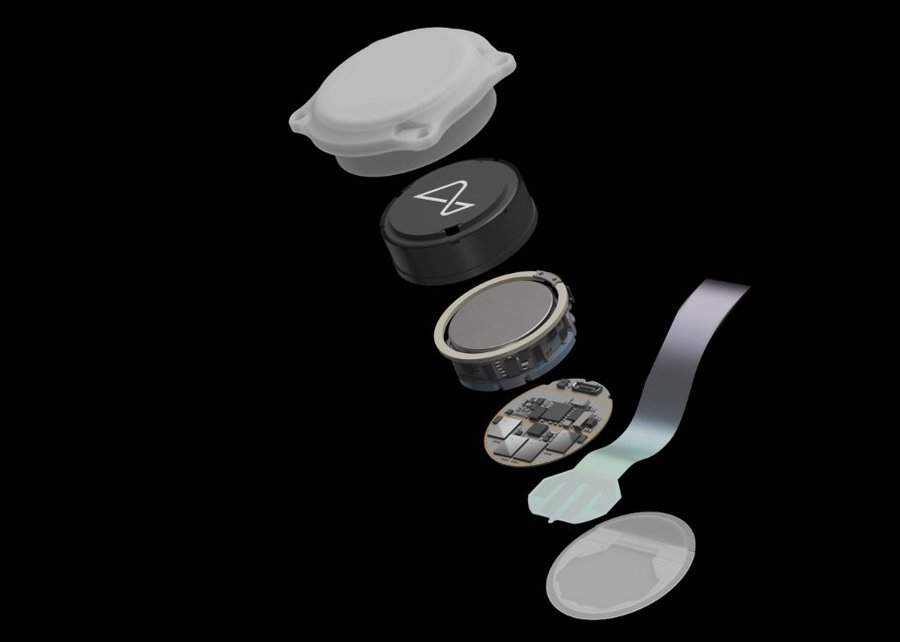Have you ever thought about how Neuralink could help people with brain injuries?
It’s incredible to imagine that a brain-computer interface might completely change the way we treat and support those recovering from brain trauma—not just as a futuristic concept, but as something that could soon be real.
As you learn more about how Neuralink works and what it might be able to do, you can’t help but wonder: could this technology truly bring back lost abilities and offer a better quality of life for patients? The possibilities are both exciting and deeply meaningful.
Understanding Neuralink’s Brain-Computer Interface
To grasp the essence of Neuralink’s Brain-Computer Interface, delve into its intricate neural connectivity technology.
The interface works by implanting tiny electrodes into the brain, which can detect neural signals and transmit them to an external device.
These electrodes, thinner than a human hair, enable a high level of precision in recording and stimulating brain activity. Through a complex process known as ‘neuroprosthetics,’ these signals can be interpreted to control computers or other devices with just the power of thought.
Neuralink’s technology aims to revolutionize how we interact with machines, offering potential benefits for individuals with disabilities, such as paralysis or spinal cord injuries.
By bridging the gap between the brain and external devices, Neuralink opens up possibilities for restoring mobility and communication in ways previously unimaginable. Imagine being able to type on a computer or move a robotic arm simply by thinking about it.
This level of seamless integration between the brain and technology holds promise for enhancing the quality of life for many individuals.
Potential Applications in Brain Injury Treatment
Implanting Neuralink’s electrodes in the brain of brain injury patients can potentially aid in their recovery and enhance their quality of life.
By leveraging Neuralink technology, individuals with brain injuries may experience significant improvements in various aspects of their daily lives:
Improved Communication
- Enhanced ability to communicate thoughts and emotions effectively.
- Facilitated interactions with caregivers and loved ones, leading to better emotional connections.
Motor Function Enhancement
- Potential restoration of motor functions through brain-computer interfaces.
- Better control over movements, assisting in activities of daily living and promoting independence.
Neuralink’s innovative approach offers hope for brain injury patients by potentially unlocking new possibilities for rehabilitation and recovery.
The precise neural interfaces provided by Neuralink can pave the way for personalized treatment strategies tailored to each individual’s unique needs, ultimately contributing to a more holistic and effective approach in managing brain injuries.
Restoring Communication Abilities With Neuralink
Restoring communication abilities through Neuralink’s technology offers brain injury patients a promising pathway to improved interaction and emotional connections.
By implanting Neuralink’s devices, individuals who’ve experienced brain injuries that hinder their ability to communicate can potentially regain the means to express themselves effectively.
These innovative devices work by establishing a direct connection between the brain and external communication interfaces, bypassing damaged areas and enabling clearer communication pathways.
Imagine being able to convey your thoughts and feelings with ease, despite previous limitations caused by a brain injury.
With Neuralink, this possibility becomes more tangible. Through the use of advanced technology, individuals may regain the ability to communicate verbally, through text, or even control external devices using their thoughts.
The restoration of communication abilities not only enhances practical interactions but also fosters emotional connections with loved ones and caregivers. It provides a sense of autonomy and empowerment, enabling individuals to participate more fully in social interactions and daily activities.
Neuralink’s potential in restoring communication abilities offers hope and improved quality of life for brain injury patients seeking to reconnect with the world around them.
Enhancing Motor Functions for Brain Injury Patients
Enhancing motor functions through Neuralink’s technology offers brain injury patients a new avenue for regaining physical control and mobility.
With Neuralink’s innovative approach, you can experience significant improvements in your motor functions, empowering you to engage more fully in daily activities.
Here’s how Neuralink may enhance motor functions for brain injury patients:
Improved Motor Coordination
- Neuralink’s technology can help enhance your brain’s ability to coordinate movements, making tasks like walking, grasping objects, and performing daily activities smoother and more precise.
Enhanced Muscle Control
- By facilitating better communication between your brain and muscles, Neuralink can assist in improving muscle control, allowing you to move with greater accuracy and strength, ultimately enhancing your overall motor function and physical capabilities.
Embracing Neuralink’s advancements can potentially revolutionize the way you navigate the challenges posed by brain injuries, offering hope for a more independent and fulfilling life.
Addressing Cognitive Impairments Through Neuralink
Neuralink’s groundbreaking technology holds the potential to significantly address cognitive impairments in individuals with brain injuries.
This offers a promising pathway towards improved cognitive function and mental acuity.
By creating a direct interface between the brain and external devices, Neuralink can potentially assist in restoring cognitive abilities that may have been affected by brain trauma.
This innovative approach may enable individuals to enhance their memory, attention, and decision-making processes, ultimately improving their overall cognitive function.
Through the use of advanced algorithms and real-time data processing, Neuralink can help individuals with brain injuries overcome cognitive challenges, allowing for a more seamless integration of neural signals and external stimuli.
This integration could lead to enhanced cognitive performance and mental clarity, providing new possibilities for those facing cognitive impairments due to brain injuries.
As Neuralink continues to evolve, its potential to address cognitive impairments offers hope for individuals seeking to regain cognitive function and improve their quality of life after experiencing a brain injury.
Improving Quality of Life Post Brain Injury
Improving the quality of life after a brain injury involves implementing holistic approaches that cater to the individual’s physical, emotional, and cognitive needs.
To enhance your post-brain injury journey, consider the following:
Physical Well-being
- Engage in physical therapy tailored to your specific needs, aiding in motor skill development and overall mobility.
- Explore adaptive technologies and tools that can assist you in daily activities, promoting independence and confidence.
Emotional Support
- Seek out counseling or support groups to navigate the emotional challenges that may arise post-injury, fostering resilience and emotional well-being.
- Practice mindfulness and relaxation techniques to reduce stress and anxiety, promoting a sense of calm and mental clarity amidst recovery.
Ethical Considerations in Neuralink Implementation
Considering the ethical implications of integrating Neuralink technology into medical practices is crucial for ensuring patient autonomy and privacy.
When contemplating the implementation of Neuralink in brain injury patients, it’s essential to address concerns surrounding consent, data security, and potential societal implications.
Individuals must have the autonomy to choose whether to undergo Neuralink procedures, with full transparency about the risks and benefits involved.
Moreover, safeguarding the privacy of patients’ neural data is paramount to prevent unauthorized access or misuse. As this technology advances, there’s a need for clear regulations and guidelines to govern its ethical use and protect individuals from potential exploitation.
Ensuring that Neuralink implementation prioritizes patient well-being and respects their fundamental rights is fundamental in navigating the ethical complexities that arise with merging technology and medicine.
By upholding ethical standards, we can harness the benefits of Neuralink while upholding the values of patient autonomy and privacy.
Future Implications and Possibilities With Neuralink
Addressing the ethical considerations in integrating Neuralink technology into medical practices sets the foundation for exploring the future implications and possibilities this innovative technology holds.
As you look ahead, the potential advancements with Neuralink could revolutionize the way we perceive and interact with the world around us.
Enhanced Cognitive Abilities
- Imagine being able to learn new skills at an accelerated rate or having instant access to a vast repository of knowledge simply by thinking about it.
- With Neuralink, the potential for enhancing memory retention and cognitive processing could lead to significant advancements in education and problem-solving.
Improved Communication and Connectivity
- Consider the possibility of seamlessly communicating thoughts and emotions to others without the need for spoken words.
- Through Neuralink, the potential for creating a network where individuals can share ideas and experiences directly through their minds could redefine human connection and collaboration.
The future with Neuralink holds exciting possibilities that could reshape our understanding of human capabilities and interactions.
Conclusion
In conclusion, Neuralink’s brain-computer interface offers hope for brain injury patients by potentially restoring communication abilities, enhancing motor functions, and addressing cognitive impairments.
This groundbreaking technology has the potential to significantly improve the quality of life for individuals post brain injury.
While ethical considerations must be taken into account, the future implications and possibilities with Neuralink are vast and promising for those in need of advanced neurological treatments.


